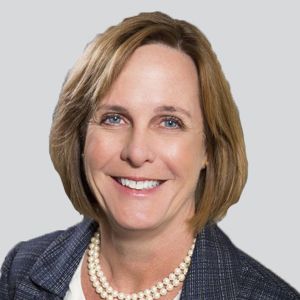Article
The Evolution of Epilepsy Care: Where We Are Going
Author(s):
Page B. Pennell, MD, president of the American Epilepsy Society, shared her thoughts on the epilepsy treatment landscape, managing women with epilepsy, and the need for multidisciplinary involvement and communication.

Page B. Pennell, MD
The state of epilepsy care seems to be constantly evolving, with new pharmacologic therapies, technologies, and techniques being introduced regularly. Many of these new advances were on display at this past year’s American Epilepsy Society annual meeting, where NeurologyLive had a chance to speak with current AES president Page B. Pennell, MD.
Pennell, who is director of epilepsy research at Brigham and Women’s Hospital in Boston, Massachusetts, and professor of neurology at Harvard Medical School, spoke about the advancements in technology for the treatment of epilepsy, noting that much progress has been made in the neuromodulation space, as well as improvements to surgical techniques. These new options have greatly broadened the pool of patients eligible for treatment.
Looking beyond specific treatments, there have been great strides taken to improve the spectrum of epilepsy care, with increased emphasis on the non-epileptic symptoms and side effects experienced by many patients. This widened focus emphasizes whole-body treatment, and allows both patients and providers to take a more proactive approach to disease management and treatment planning.
To learn more about these initiatives and better understand where epilepsy care is heading, NeurologyLive spoke to Pennell in an interview.
NeurologyLive: What are some of the major shifts in epilepsy care that you have observed recently?
Page B. Pennell, MD: One of the things that's really changed is our opportunities to use devices and other surgical techniques for epilepsy. The meetings used to only be about the latest medication—we still have 2 new approved medications we're very excited about—but now, we also have other alternative treatment strategies. With devices, we're talking about things such as neuromodulation and changing the pacemaker rhythm of the epilepsy and reducing seizure burden. We continue to also use surgery to reset the seizure focus, but again, we have new technologies such as laser. We're not working with just the traditional ways for surgery, we have new ways of implanting the electrodes to map out the seizure focus, and really looking at epilepsy as a network disease rather than just one single isolated focus. Through these new strategies, we’re able to offer treatments to many more patients that were not eligible for treatments before that could really make a difference in their epilepsy.
Another area that I think that I've seen change over the years is a focus on the entire spectrum of epilepsy care. It's not just about treating the seizures, but more so about treating the whole patient. We have a lot of emphasis on the comorbidities that occur with epilepsy, whether it's higher rates of depression, anxiety, lower quality of life. Additionally, bringing in collaboration across the professional spectrum from advanced practice practitioners, such as nurse practitioners, all the way up through the neurosurgeons, but also from pharmacy, psychiatry, psychology, social work, etc. The idea is that epilepsy is much more than treating the seizures, and it takes a whole team of professionals to provide the best treatments possible.
What do you feel is currently the most pivotal need in treating women with epilepsy?
One of the reasons why I chose to focus the [AES] presidential symposium on management of women with epilepsy during childbearing years is the tremendous progress we’ve made over the past 15 years. We actually have data that's very sound, that provides the tools for us to practice evidence-based medicine. However, there's a lot more work that needs to be done. The medications that we have good information on are a small handful compared to all the medications that are being prescribed. That's one area that we need to continue to promote, including the pregnancy registries to get more information. Then there's other types of studies, such as those looking at long term neurodevelopmental consequences to children that were exposed to the medications in utero. We really need to continue that work. On the flip side of that, you can see by prescribing patterns, that there is an increased awareness that some medications are much safer than others. The medicines that are less safe have seen the number of prescriptions written go down over the years. There's still a lot of practitioners and patients out there who are not aware of the information we have. We need to continue to increase that awareness so that a woman goes into a pregnancy with the best chance for her health outcomes and the long-term health outcomes of her child.
How can we work more collaboratively with women’s health professionals to ensure that consistent information on care is communicated?
We certainly have reached out to other communities and hope to and continue to try. At my personal practice, I am incredibly fortunate to have colleagues in the other areas, especially contraceptive gynecology. This is an important piece; to be able to have planned pregnancies, and then go through obstetrics and maternal fetal medicine specialists and a neonatologist, who takes care of the child. I'm very fortunate but I realize that is not the case in a lot of other settings, including obviously in the US, never mind worldwide. We did recently release recommendations from the International League Against Epilepsy Task Force on treatment of women with epilepsy during pregnancy. We put it in a format that's open access in an educational journal. The idea is that it will be available to a nurse somewhere, a primary care doctor, across the wide spectrum. There will also be a patient piece that will come out of this very soon and will be available on Wikipedia. The public access is a big part of the puzzle as well.
Transcript edited for clarity.
For more coverage of AES 2019, click here.




